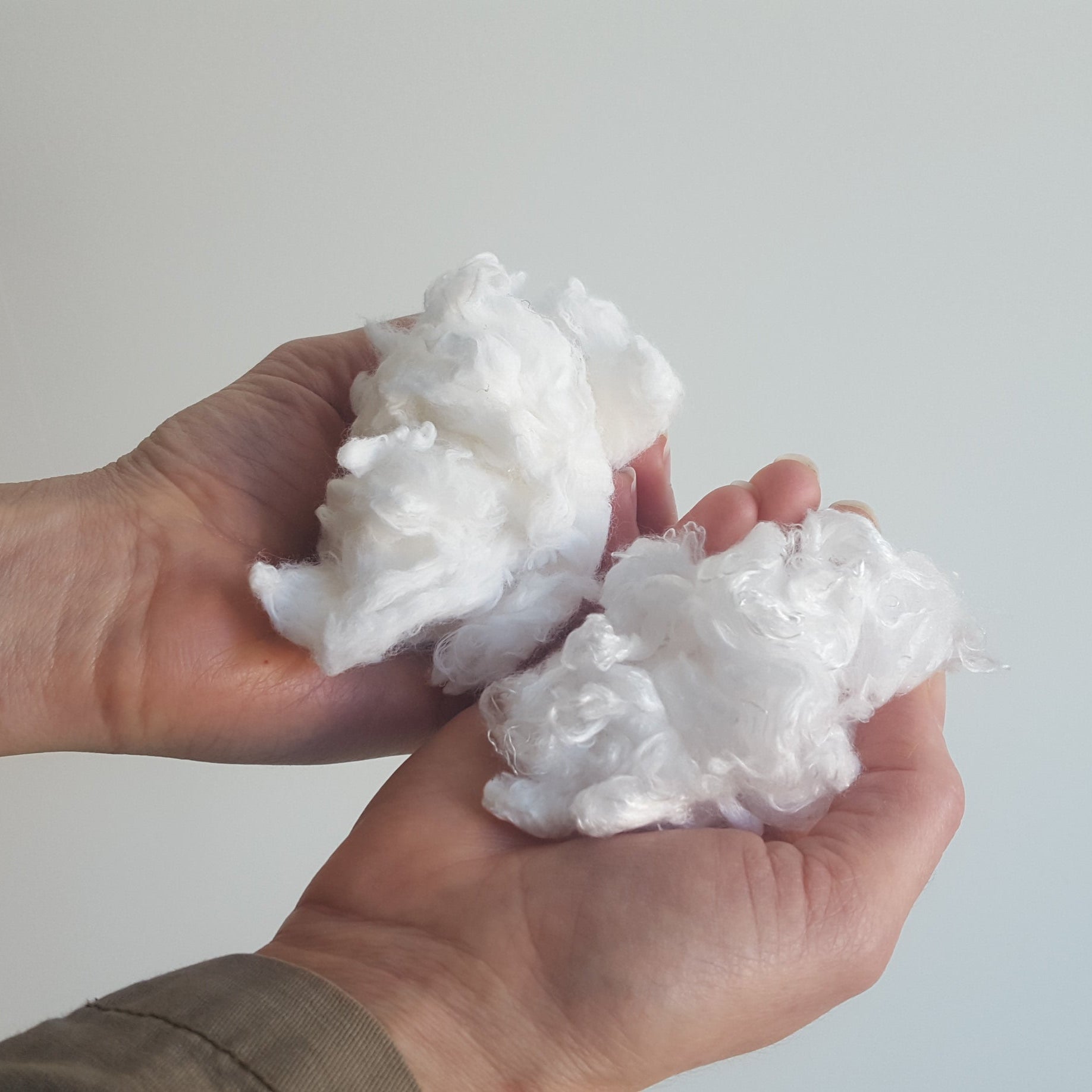Imagine this scenario…you get back home from shopping after purchasing that adorable blouse you’ve been eyeing for a while. You’ve purchased the blouse for tonight’s dinner party and cannot wait to show it off to your friends and family.
You rip off the tag in haste, throw it on and start getting ready, but something is…wrong. Not long after throwing on the top, you realize your neck is covered in hives and itching uncontrollably. You immediately take the blouse off and notice that your skin is inflamed and hot to the touch. What the ****!
If this scenario is at all familiar to you, then you may have textile dermatitis, and you’ll want to read on. This week we discuss latex hypersensitivity reactions and the sometimes lesser known polyester allergy. Learn how to identify symptoms, AND get some tips and discover alternative clothing to try!
Please keep in mind that although these tips and information have worked for several eczema sufferers, I am in no way a medical professional. If you’re experiencing severe eczema or have a topical infection, it is always best to seek medical advice immediately.
What is Textile Contact Dermatitis?
Many people who have sensitive skin can develop allergic contact dermatitis (ACD) due to certain chemical additives in clothing and from specific fabrics used in clothing. While it is possible to have an allergic reaction to the fabric fiber itself, the majority of textile contact dermatitis cases are due to an allergic reaction to the fabric’s chemical processing agents.
Common chemical additives that can cause contact dermatitis include: formaldehyde (used to make fabrics wrinkle-resistant), para-phenylenediamine, dyes (e.g. azo and anthraquinone), chrome, cobalt, nickel, nylon, and latex. Metallic fasteners and zippers may also be the source of allergic contact dermatitis.[1]
The formal term for such allergic reactions is textile contact dermatitis. Polyester and latex allergies are some of the most common causes of textile contact dermatitis.
Most allergic symptoms are usually temporary and topical and the most common one is skin reaction, a rash. Some individuals, however, can develop a more severe systemic reaction called anaphylaxis or anaphylactic shock. Symptoms of anaphylaxis include:
- Swollen and red skin, lips, tongue, or throat
- Shortness of breath (with or without wheezing)
- Low blood pressure
- Dizziness
If you develop any of these serious allergic symptoms, please seek urgent medical attention at a local emergency room.
Less serious allergic symptoms can include:
- Runny nose
- Belly pain or diarrhea
Aside from contact allergy, there is non-allergic contact dermatitis, also known as irritant contact dermatitis, which occurs when an irritant gets in contact with the protective outer layer of your skin, damaging it.
Irritant contact dermatitis can become worse if you’re exposed to heat, cold, friction (for example, when your skin is rubbing against the material that contains the irritant), or dry air (low humidity).
While both contact allergy and irritant contact dermatitis can be quite uncomfortable, thankfully, they aren’t contagious. What’s more, they can easily be avoided if you pay more attention to your shopping – particularly by not purchasing things that contain latex or polyester, to name a few.
Which Products Contain Latex/Polyester?
Although latex can be found in several household supplies, polyester is usually more difficult to avoid. Check out our list below to get a good understanding of which products or clothing tend to contain these two allergens.
If you think you have an allergy to latex or a latex sensitivity, you should try to avoid the following products as they might cause allergic reactions:
- Clothing containing exposed elastic bands, such as pants, underwear, running shoes and coats with fitted cuffs.
- Certain household products such as bathmats, rugs and rubber gloves.
- Craft supplies, certain make-up, adhesives, erasers and much more.
- Anything containing elastic (unless made of lycra, spandex or elastane).
There are many online forums with anecdotal accounts of individuals with a latex allergy also reacting to shea butter products. While there is no known scientific connection between shea and latex, if you have an allergy to latex, it may be wise to practice caution when trialing products containing shea butter.
Alternatively, for a polyester allergy, you’ll want to try to avoid the following products:
- Certain exercise clothing, pajamas, shirts, blouses, etc.
- Certain toys that include doll hair or plush faux furs.
- Certain carpets and bed sheets.
Make sure to always read labels before purchasing new household products or clothing. You’ll be surprised at how much stuff out there contains these two allergens and can cause a skin reaction!
Latex & Polyester Free Alternatives
Some excellent alternatives to polyester are fabrics such as Cotton, silk, or lyocell. For the feet, these 100% organic cotton Hypoallergenic Socks for Adults and Kids are fantastic! And yes, they are latex and polyester free!
For latex-free underwear, opting for 100% Organic Cotton is also a great choice. It can be difficult to find a safe elastic, but we’ve got you covered with these Anti-Itch Anti-Odor Boxer Briefs with TENCEL and Zinc.
For those affected by breast eczema or skin irritation, make sure to check out the Anti-Itch Hypoallergenic Bra.
If you’re experiencing groin eczema due to latex hypersensitivity, definitely check out our blog post: How To Treat Groin Chafing Naturally
For full body coverage, check out these gentle clothing alternatives by Remedywear. Made with super soft TENCEL embedded with anti-inflammatory zinc, they’re great for wearing alone as pajamas or underneath regular clothing during the day to protect the skin. The waist bands contain latex-free elastic covered by the clothing material, so no elastic is touching the skin.
Remedwear Long Shirt for Kids – Provides gentle protection to the arms, chest, stomach, and back.
Remedywear Long Shirt for Adults – Features moisture-wicking sweat control, as well as antibacterial and antimicrobial properties.
Remedywear Pants for Kids – Stretchy and form-fitting, these eczema pants protect the legs, knees, and buttocks.
Remedywear Pants for Adults –These legging-like pants protect the skin from scratching and also boost the healing process.
Other Causes
Aside from latex and polyester allergies, there are several other allergens that can contribute to clothing dermatitis.
It is not a secret that some clothing contains harsh chemicals and dyes to achieve the desired effect. For example, formaldehyde is used to make clothing that is wrinkle-resistant. Yes, that’s the same chemical used in embalming fluid. Yuck! Chemicals are also used in fabrics that are color-fast and stain-resistant, as well as in corduroy and shrink-proof wool. None of the clothing above contains any of these harsh chemicals.
A Latex/Polyester “Elimination Diet”
If you’ve read any of our past blog posts, you’ll notice we discuss food-elimination diets very often because we believe in healing from within.
An elimination diet is carried out by eliminating food allergens for a certain period of time and reintroducing each individually to determine which food is causing the reaction.
Like a food elimination diet, you can choose to run a latex/polyester “elimination diet” as well! Here is what to do so you can avoid contact dermatitis.
- Start by separating your clothing or household products by allergy-prone materials such as latex, polyester, and Spandex. Nylon allergy is pretty common, too – so eliminate nylon as well, just to be sure.
- For the first few days (and to treat possible flare-ups), wear only hypersensitivity-approved materials such as 100% organic cotton or silk.
- Slowly reintroduce one allergy-prone material, such as latex or polyester, over a several-day period to determine which material is causing a reaction.
- Make sure to track your results in a health diary or journal to really understand what is causing the flare-up.
If you’re not able to determine the allergen or you’re experiencing severe flare-ups or symptoms, make sure to seek a medical practitioner to get a proper diagnosis. Patch testing is one diagnostic option for patients with suspected allergic contact dermatitis.
Practical Tips
- Choose natural fabrics such as cotton, silk or lyocell
- Choose light coloured clothing as these will contain less dye
- Wear loose-fitting clothing in hot/humid environments
- Avoid clothing that is labeled “non-iron” and “dirt-repellent,” as it is likely these have been chemically treated
- Avoid clothing marked “wash separately” as this implies dyes easily bleed from the fabric [1]
Although a latex or polyester contact allergy might be annoying to deal with, thankfully, there are several safe clothing and bedding alternatives. Find out what’s safe for you, and you can steer clear of textile dermatitis.










